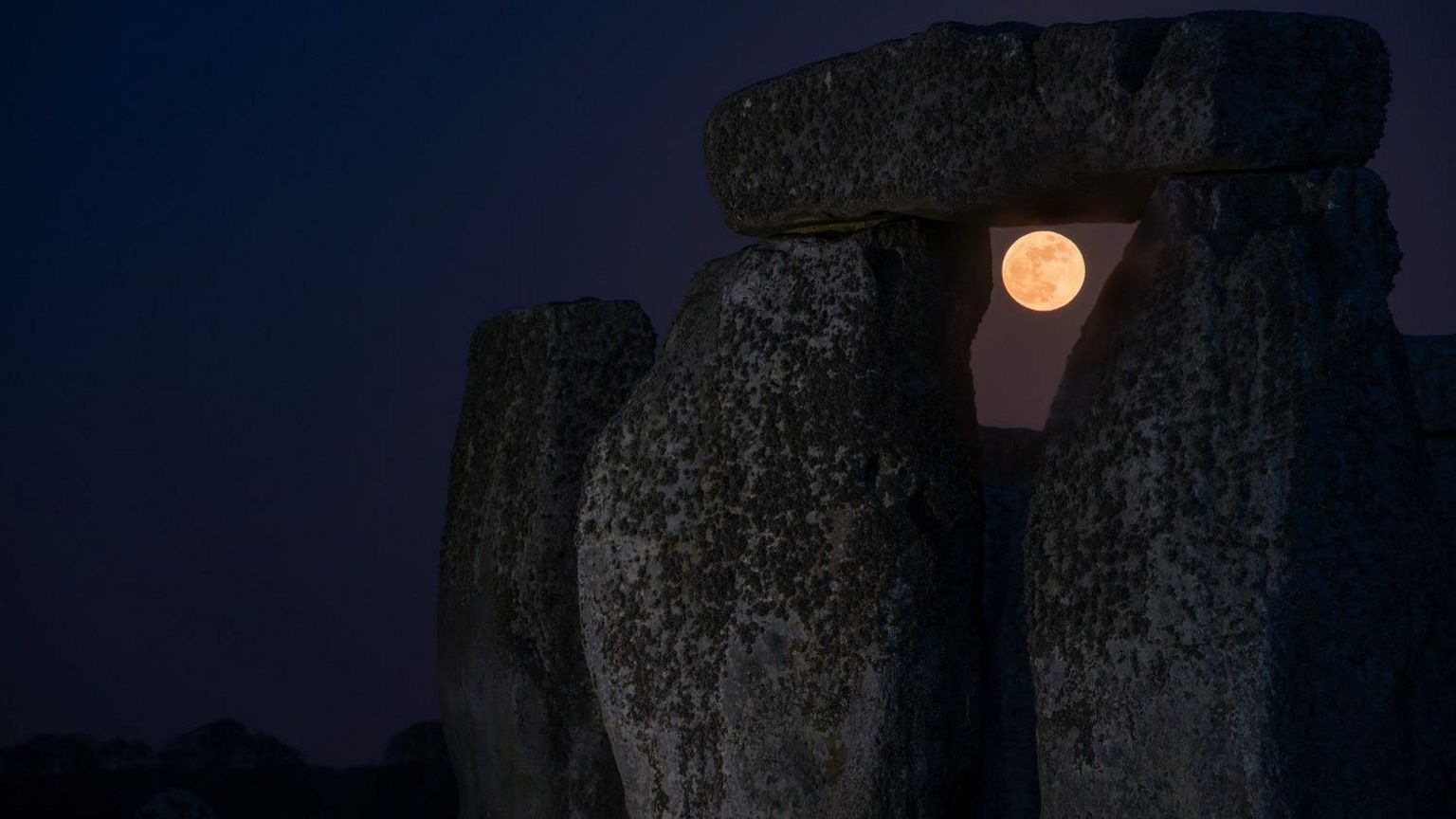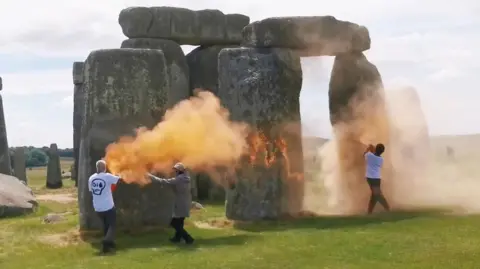Researchers are investigating whether Stonehenge aligns with the positions of the Moon, as well as the Sun.
English Heritage and experts from other organisations are studying the connection between the ancient monument and a major lunar standstill, which happens every 18.6 years.
The term refers to the point when moonrise and moonset are furthest apart along the horizon, and next takes place in 2024-25.
The theory is that these lunar movements might have been noticed in the early phase of Stonehenge and gone on to influence its later design.
Dr Silva from Bournemouth University said around the time Stonehenge was constructed people might have gathered to see the Moon too.
Due to major lunar standstills occurring relatively infrequently, academics have jumped at the chance to study it.
English Heritage is working with experts from the universities of Oxford, Leicester and Bournemouth, as well as the Royal Astronomical Society.
"So we could be talking about a generational event that people might have come to Wiltshire for," said Dr Fabio Silva from Bournemouth University.
"We'll never be able to prove this, but the greater understanding we can get of these monuments and the Moon, the stronger the argument will be."
Lecturers and students from Bournemouth University will document the Moon's movements and relationship with the stones.
"It's rising further to the north than it has done and a fortnight later, it rises further to the south and we believe places like Stonehenge might have aligned to the Moon when it's doing this," Dr Silva continued.
"It will add a much more diverse nuance to the answers we already have."
Summer Solstice at Stonehenge is a very popular event that attracts thousands of visitors every year.
Stonehenge is widely known for its connection to the movements of the Sun, in particular at summer solstice, when thousands flock to the monument in the early hours to witness the sunrise.
Archaeoastronomer (someone who studies how people in the past understood phenomena in the sky) Prof Clive Ruggles from the University of Leicester said: “Stonehenge's architectural connection to the Sun is well known, but its link with the Moon is less well understood.
"The four Station Stones align with the Moon's extreme positions, and researchers have debated for years whether this was deliberate, and—if so—how this was achieved and what might have been its purpose.”
English Heritage is inviting the public to be involved in a series of events, including talks, a pop-up planetarium, stargazing and a new display in the exhibition space.
It will also livestream the southernmost moonrise at Stonehenge.
https://www.bbc.co.uk/news/articles/c80zexkvenko




